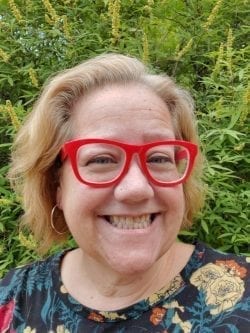
Giving thanks for Thanksgiving
Reflecting on this past year and how tough it’s been for everyone, I’ve been thinking about the importance of giving thanks quite a bit. I’ve noticed that I always comment about food in my blogs, but let’s be honest – it’s absolutely appropriate this time.
We ALL think of Thanksgiving foods when we think of Thanksgiving Day! It’s a day for feasting and thinking about the many good things we have to be grateful for. (And yes – turkey and pumpkin pie are on my Thanksgiving list!)

But why else should we be giving thanks?
I’ve been teaching my daughter about what we’re really celebrating, and I’ve gone back to review what I know about Thanksgiving. In doing this, I’ve been surprised to discover that a lot of what I’d learned in elementary school is inaccurate.
For example, I’d always thought that the settlers were the first Europeans to arrive to America, but that’s just not so! It was fascinating to learn that Europeans had actually been fishing and trading along the coastline for over 100 years by the time the settlers arrived. In fact, some indigenous people the European settlers first encountered already spoke English because of the fishing industry. I had no idea!
Language diversity in the Americas
Another point to recognize is that there were many indigenous languages spoken across the Americas when the European settlers first arrived. (English is NOT a native language of North, Central, or South America.) In the 1500’s, there were nearly 700 indigenous languages already being spoken in North America alone.
Sadly, many of these indigenous languages have become extinct as time has passed. Here in the United States, there were approximately 300 indigenous languages being spoken when the European settlers arrived, but as of 2020, that number has dropped to just 175. Linguists predict the number of spoken indigenous languages will decrease to 20 within the next 30 years.
A large contributor to the death of indigenous languages in the U.S. was when children began being placed into schools where it was forbidden to speak any language other than English. (Many were separated from their families and sent away to English-only boarding schools.) School leaders had strict policies regarding the use of native languages, and students were punished for not speaking English.
This practice is not as far in the past as we would like to think. My mother’s family brought her to the U.S. from Mexico in the 1950’s. She had to learn English quickly, as there weren’t any language programs like we have today. Spanish was strictly forbidden at school. Not only did teachers refuse to help her learn English, but she was punished for even using Spanish on the playground. Luckily, my grandmother refused to allow English to be spoken in the home, so my siblings and I all grew up fluent in both languages.
The beauty of bilingualism and biculturalism
When I was in elementary school in the 1970’s, I was fortunate that I spoke both Spanish and English. I often helped other students who didn’t speak English by helping to translate for them in the classroom. (Perhaps this is where my love of languages and teaching began!)
In my home today, we work hard to make sure our children speak both Spanish and English. Speaking Spanish with my daughter doesn’t just give her a job skill – it connects her with her heritage. It saddens me that so many people have lost that connection, and I am profoundly grateful to be able to give it to my children.
Giving thanks from around the world
Here at Bilingual Bridges, our team is spread across four continents. We’ve worked hard to create the amazing community of teachers and students that we have today, and we want to thank you for being a part of it! From our family to yours, we all want to wish you a very happy Thanksgiving!
As you join together, even if just virtually, take a moment to reflect on the beauty of your culture, our nation’s history, and how you communicate with those you love.

About the author

Bilingual Teacher at Bilingual Bridges



